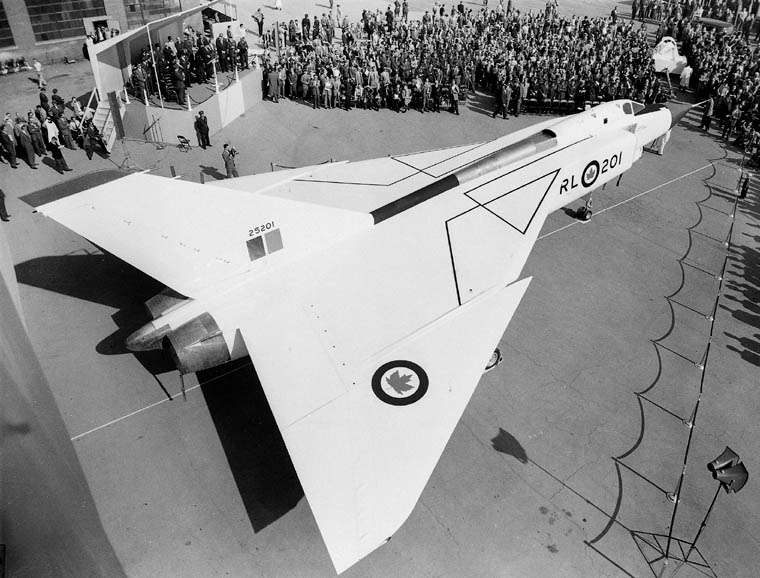February & Remembering Avro Arrow
This February, we proudly honour the legendary Avro Arrow, a symbol of Canadian innovation and excellence in aviation. Though its journey was cut short, its legacy soars on, inspiring future generations. Join us in celebrating this engineering marvel as we dedicate the month to remembering the greatness of the Avro Arrow.
Why Canada Needed the Avro Canada CF-105 Arrow
Background
In the early years of the Cold War, Canada faced a significant challenge in defending its airspace. Situated between the United States and the Soviet Union, Canada was a key player in North American defence. The threat of Soviet long-range bombers carrying nuclear weapons over the Arctic prompted Canada to seek a high-performance interceptor aircraft capable of countering this danger.
Avro Canada, a leading aerospace company at the time, was tasked with developing an advanced supersonic jet to replace the aging fleet of subsonic interceptors like the CF-100 Canuck. The result was the Avro Canada CF-105 Arrow, an ambitious, cutting-edge aircraft that promised to make Canada a leader in aerospace technology.
The Need for the CF-105 Arrow
Defence Against Soviet Bombers
During the 1950s, the primary threat to North America was
Soviet long-range bombers such as the Tupolev Tu-95, which could carry nuclear
weapons and reach North American targets via the Arctic. Canada, as part of the
North American Aerospace Defence Command (NORAD), needed a high-speed,
high-altitude interceptor capable of detecting and neutralizing these bombers
before they reached Canadian or American cities. The CF-105 Arrow was designed
for this very purpose, boasting impressive speed and altitude capabilities that
would have made it one of the most effective interceptors of its time.
Technological and Industrial Growth
The Arrow represented a significant leap forward in Canadian
aerospace engineering. Designed and built entirely in Canada, it featured
advanced delta-wing aerodynamics, a cutting-edge fly-by-wire system, and a
powerful twin-engine setup. Its projected top speed of Mach 2+ and
high-altitude performance would have placed it among the most advanced military
aircraft of its era. The project also supported thousands of jobs in Canada’s
aerospace industry and positioned the country as a global leader in aviation
technology.
Strategic Independence
Relying on foreign-built aircraft, such as those from the
U.S. or Britain, was not a sustainable long-term strategy for Canada’s defence.
By developing the Arrow, Canada aimed to maintain sovereign control over its
air defence and reduce dependence on foreign technology. This approach would
have allowed Canada to dictate its own military strategy rather than relying on
American-built interceptors such as the F-101 Voodoo, which was later adopted
after the Arrow’s cancellation.
Potential for Export and Collaboration
If the Arrow had entered production, it could have been
exported to allied nations, bolstering Canada’s economy and reputation as a key
player in the aerospace industry. Some experts speculate that the Arrow could
have been a valuable NATO asset, offering Western nations an alternative to
American aircraft.
Conclusion
The Avro Canada CF-105 Arrow was not just an aircraft; it was a symbol of
Canada’s ambition, innovation, and sovereignty. Its cancellation in 1959
remains one of the most controversial decisions in Canadian history. While
political and financial concerns led to its demise, the Arrow’s potential to
revolutionize Canadian defence and aerospace technology remains undeniable. Had
it been fully developed and deployed, Canada might have remained at the
forefront of global aviation, with a defence system tailored to its unique
geographical and strategic needs.













